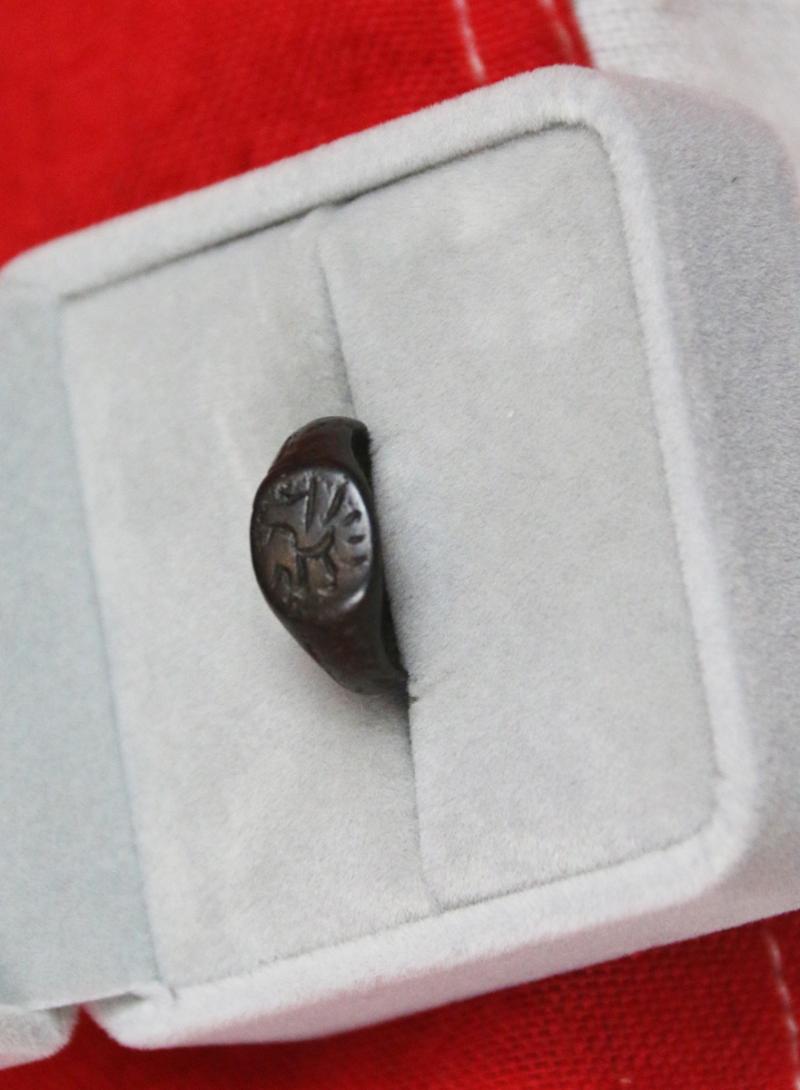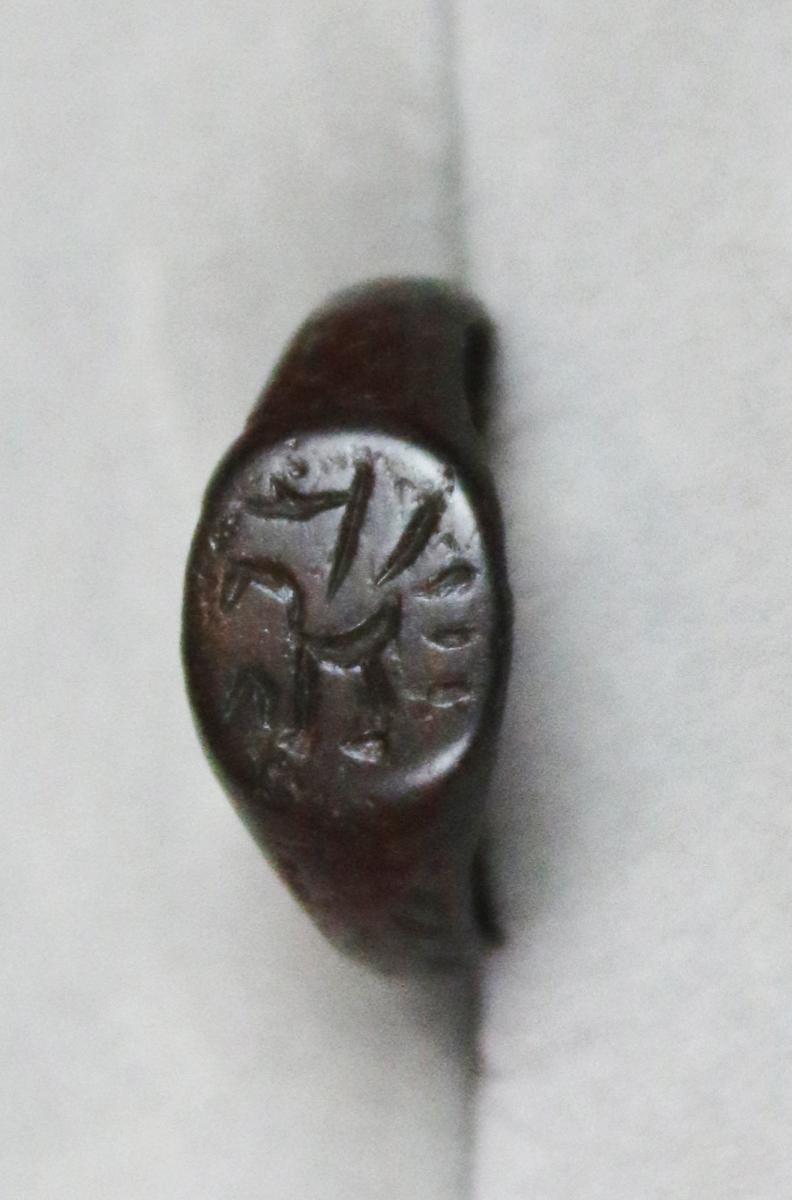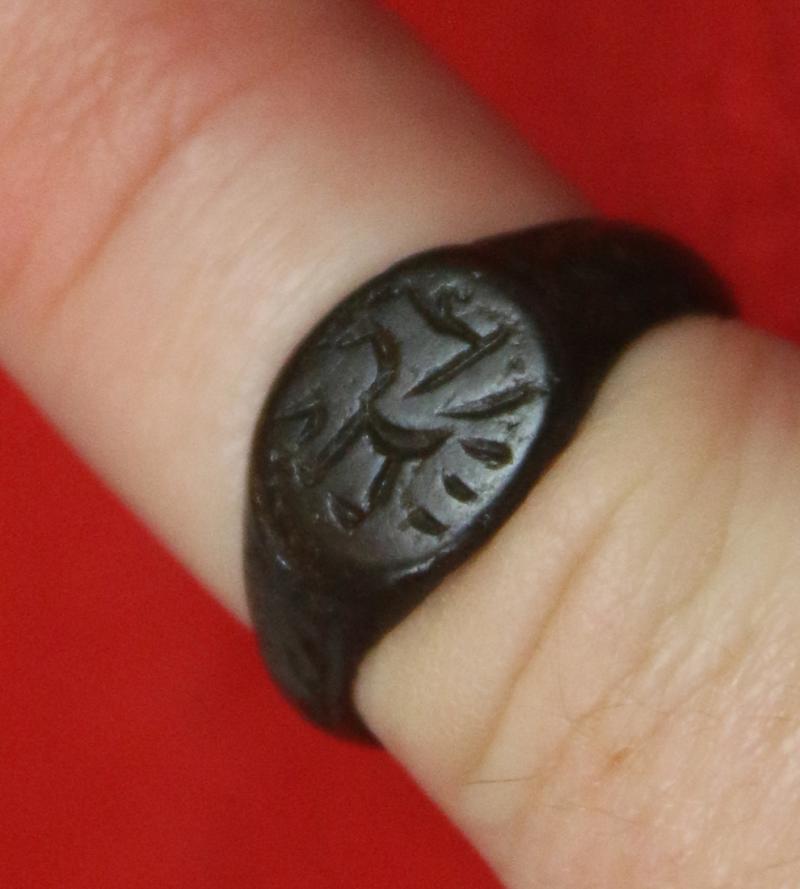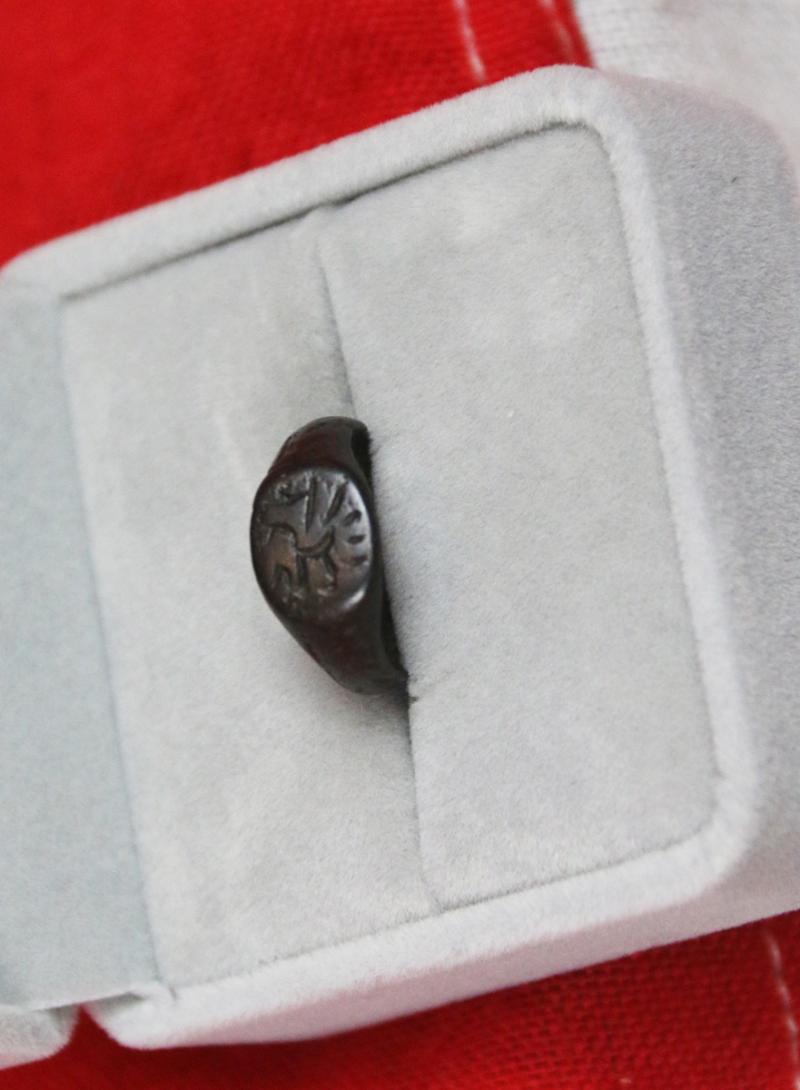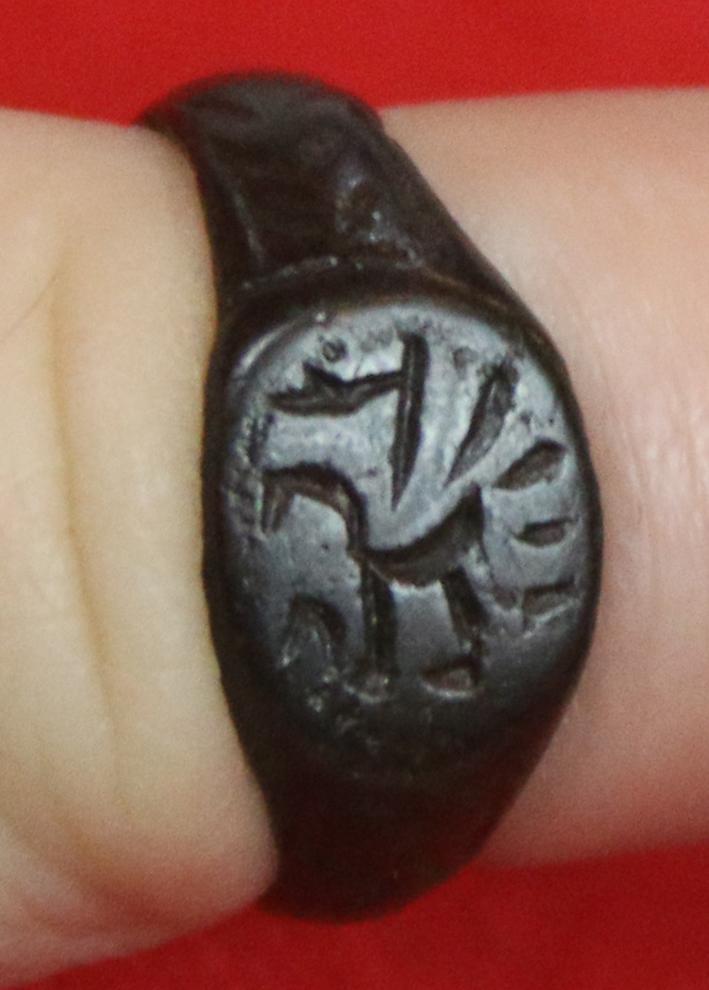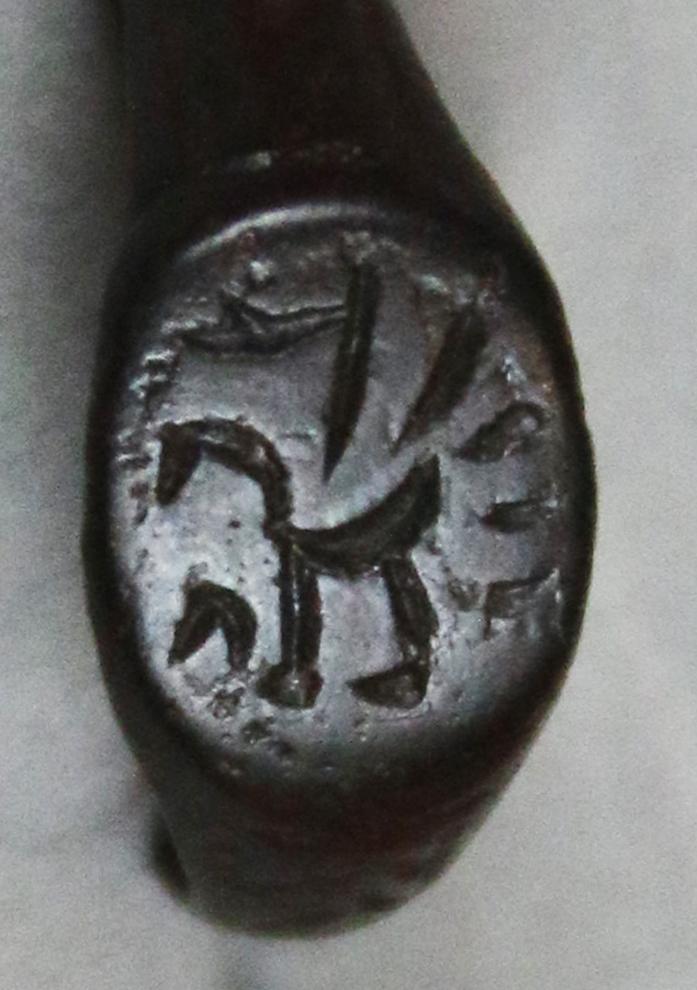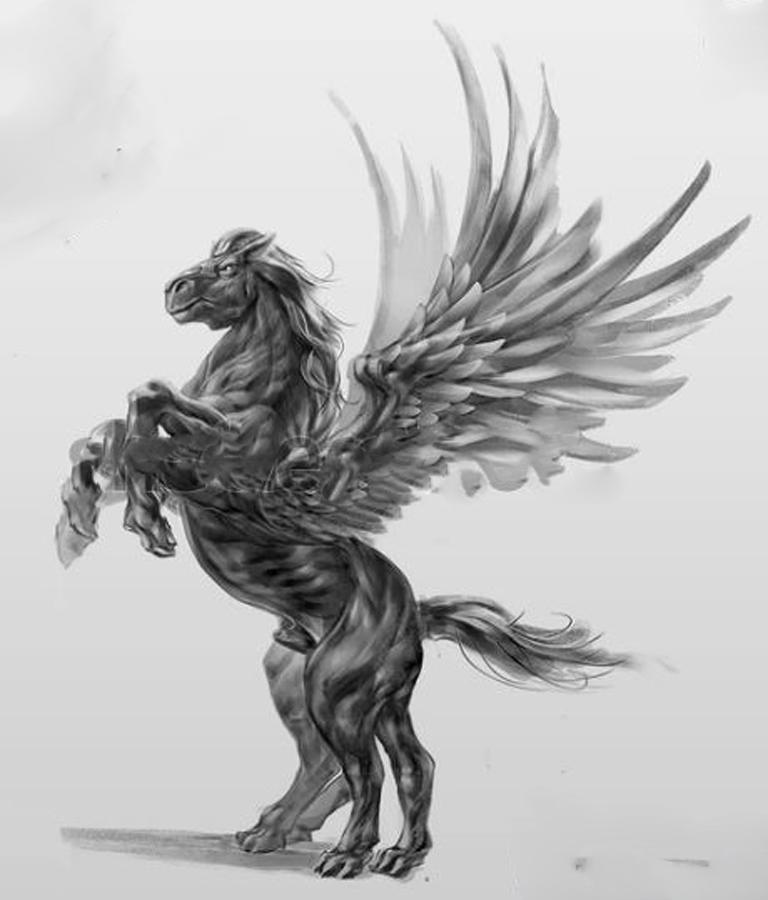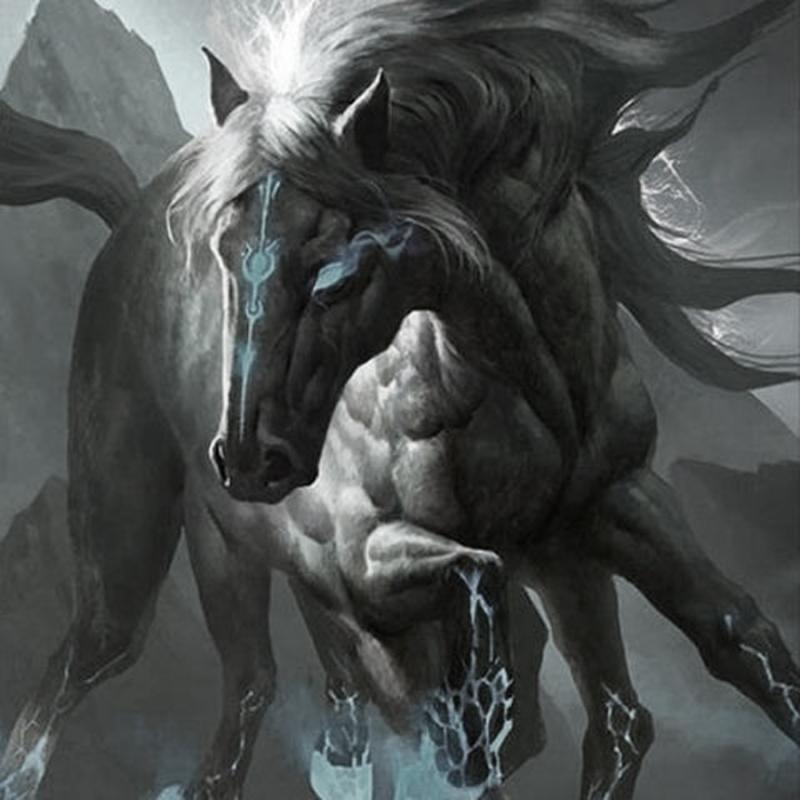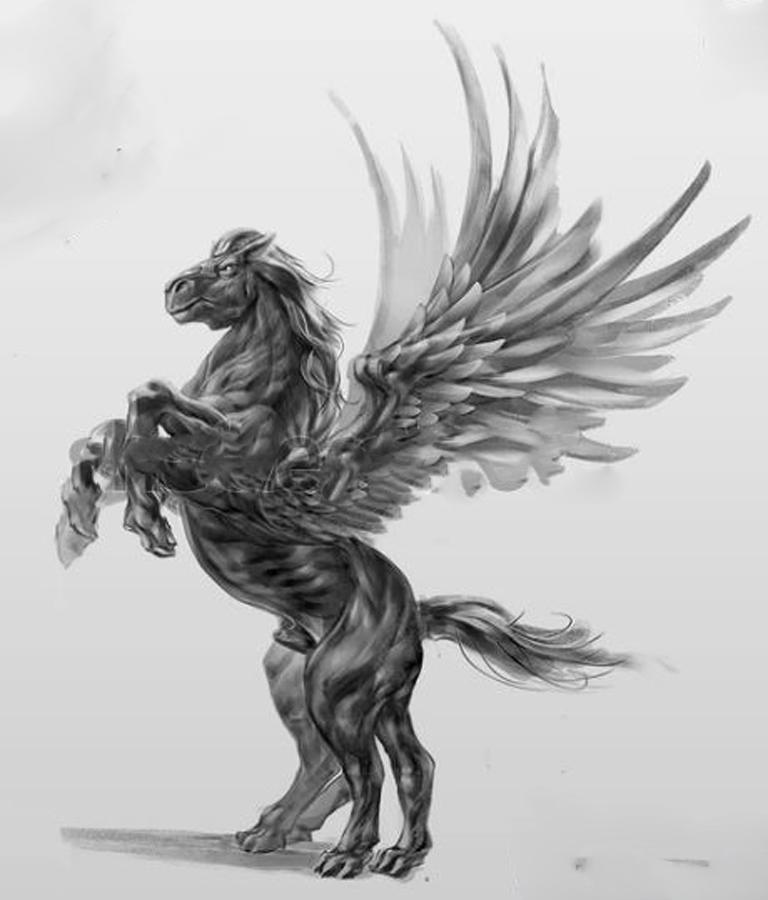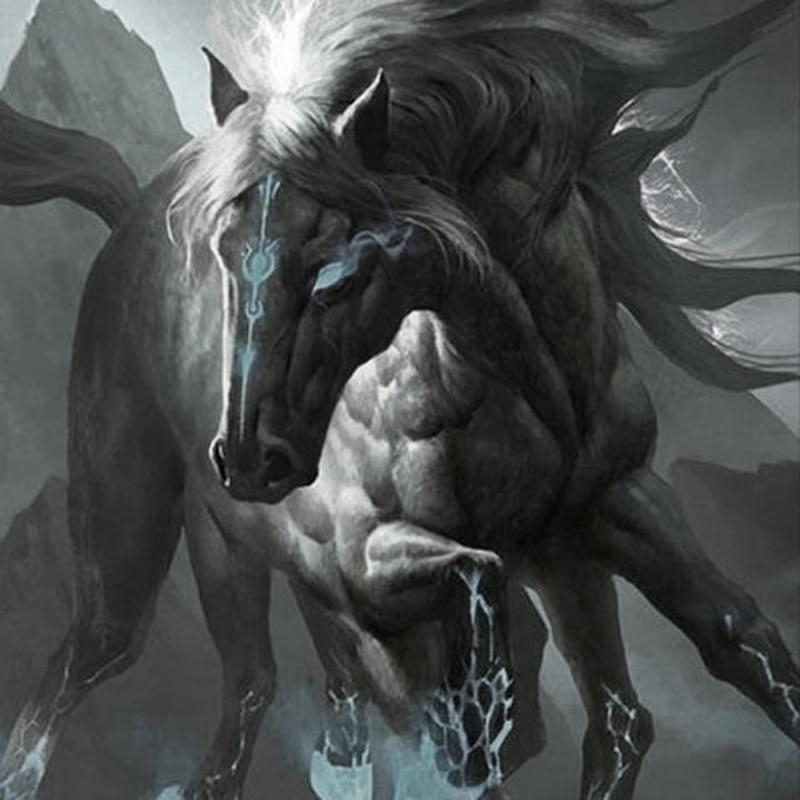A Medieval, Viking, 900 Year Old Warrior’s Bronze Ring Intaglio Engraved With Odin’s Steed Sleipnir The Eight Legged Winged Horse, The Son of Loki
Engraved, as is usual for Viking rings, in the stylised form. Despite being a horse he was, throughout Viking legend, also the son of Loki. Although much of the Viking peoples of the North were converted to Christian and settled by the 12th century, the old ways were still revered and continued in worship by many Viking peoples. Hence in the 13th century Viking sagas, such as Prose Edda, were set down detailing all the Viking gods, battles, and warriors, for all to know, and here, Odin’s steed, Sliepnir, is detailed in several fascinating tales. In some interpretations Sliepnir is winged, in others not, but he always has the power of flight, and, eight legged.
Odin, the powerful Norse god of war, poetry, knowledge, and wisdom, also has a divine horse in his service. Renowned for his speed, the eight-legged horse Sleipnir carries Odin on his journeys through the Nine Worlds that are the homelands of the elements found in the Norse worldview—humanity, tribes of gods and
Odin is a warrior god, thus when going to war it is on the back of his eight-legged horse, Sleipnir (The origin of the name “Sleipnir” would come from the Old Norse “the sliding one”, due to his ability to slide between worlds).
Sleipnir was a son of Loki, the trickster god that lived among the Asgardian gods. But, surprisingly, Loki was not the father, but the mother of Sleipnir. Read below to find out why.
The birth of Sleipnir
Traveling north, to the country of Vikings, Iceland, we meet this winged horse that does not simply belong to a hero, but to the leading deity of the Icelandic pantheon, the father of gods and humans, Odin.
Myth wants the Scandinavian gods to reside up in the sky in a castle called "Asgard". In order to build the castle, the gods were looking for a skilled craftsman, whom they found in the face of a giant. The gods promised the giant that if he completed the work in three winters, they would give him the Sun, the Moon and the goddess of love Freya.
But the gods, seeing that the giant was using the magic horse Svadilfari, to carry huge volumes of rock with incredible speed, changed their minds, so that the giant could not meet the terms of the agreement and so did not have to fulfill their promise. They, therefore, invented a trick. The god Loki transformed into a beautiful mare, attracted the giant's magic horse and led it to a forest. From the meeting of the two horses, Sleipnir was born, a winged horse with eight legs. Sleipnir was the famous horse of the god Odin the All-father, with which he descended from heaven to earth and led to Asgard the heroes who fell in battle. It seems that for the northern peoples this winged horse embodied the hope that the heroically fallen would eventually be led to the residence of the gods.
Sleipnir is “the best among horses.” It can gallop faster, jump higher, kick harder, and whinny louder than any other horse, whether it is found grazing on the grass of Midgard or feasting in the rich stables of Asgard. Its strength knows no equal, and its heart knows no fear.
In addition to racing over the ground, Odin’s mighty steed can also fly through the air and swim through water. None of the elements slow him down. Famously, it is even able to ferry Odin safely in and out of Hel, the realm of the dead.
In one story Odin is described as riding Sleipnir to the land of the giants, while in another story, Odin lets his son Hermodr ride Sleipnir down to Helheim, the realm of the dead. Sleipnir is also thought to have left his imprint on the world of men, with Icelandic folklores attributing the creation of the Asbyrgi, a horseshoe-shaped glacial canyon in the north of Iceland, to Sleipnir.
Depiction of Sleipnir in a detail on the Tjängvide image stone.
In Norse mythology, Sleipnir /ˈsleɪpnɪər/ (Old Norse:ˈslɛipnez̠, is an eight-legged horse ridden by Odin. Sleipnir is attested in the Poetic Edda, compiled in the 13th century from earlier traditional sources, and the Prose Edda, written in the 13th century by Snorri Sturluson. In both sources, Sleipnir is Odin's steed, is the child of Loki and Svaðilfari, is described as the best of all horses, and is sometimes ridden to the location of Hel. The Prose Edda contains extended information regarding the circumstances of Sleipnir's birth, and details that he is grey
As with all our items it comes complete with our certificate of authenticity
Code: 24637

